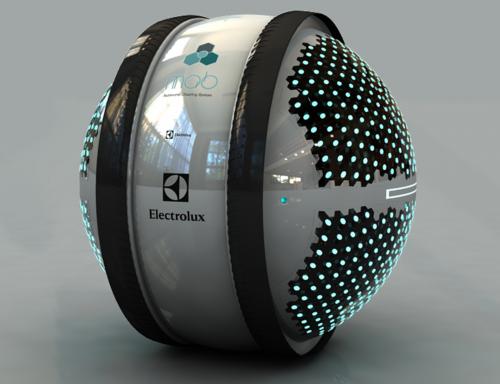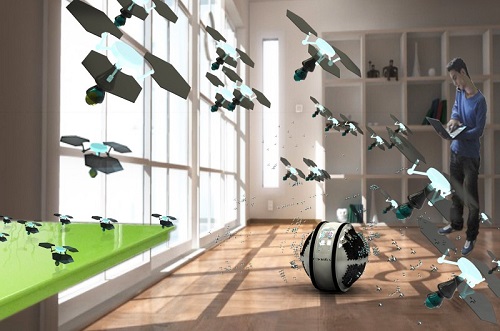The Electrolux Design Lab competition is an annual international competition designed to motivate and support budding design students; this year’s competition was conquered by the young Columbian designer Adrian Perez Zapata’s flying cleaning mini-robots, the Mab. Shaped like a sphere, the machine is a carrier of 908 mini-robots, all of whom work in unison to clean up dust inside someone’s home. As an added bonus: the bots can even spray air freshener.

Hosted by the prominent household appliance maker Electrolux Design Lab, the contest provides the company with insight into future design possibilities while awarding young designers publicity and exposure to the professional design world. The first prize winner is given 5,000 euros and the opportunity to work along professionals at Electrolux’s primary design center for a period of six months. This year’s lineup was a close match between Zapata was Brazilian designer Luiza Silva, finishing in second place with her 3D food printer, and Korean designer Jeabyun Yeon with a breathable wall.
Mab’s concept
Zapata’s central idea behind Mab was to free the user of everyday chores by automating the drudgery of cleaning. This accomplished with the aid of 908 mini-robots using water droplets that pick up dirt from the floor, before returning to a carrier unit to deposit the debris, reload water droplet ammo, and feed the system with the solar energy captured by their wings. The sphere carrier holds a mixture of water and additive to increase the surface tension of the water and allow greater binding with particles; once dirty droplets are deposited and replaced, the core filters the dirt to recover a high percentage of usable water in order to sustain the cycle. Commands controlling the robots are issued from the carrier itself and based on information they robots capture using embedded sensors.

If not already obvious, Zapata’s design philosophy was inspired by the mutual effort in which honeybees pollinate flowers before returning to the nest with nectar.
Functional details
Zapata tells us that the act of cleaning using micro-aerial vehicles is a near future possibility thanks to research being developed in the laboratory of Harvard Microrobotics; researchers have already successfully built mini-robots mimicking bees with compact fuel cells. The wings of the MAVs arrange piezoelectric actuators with photovoltaic properties into patterns resembling the nanostructure of butterfly wings, called gyroids, to function as solar panel while maintaining 15 minutes of steady flight. Zapata’s design is meant to embrace this technique for facilitating similar energy efficiency.
Mab’s 908 micro-aerial vehicles will be manufactured in carbon fiber with a high porosity in the nozzle to capture the water droplets. A slight vacuum in the nozzle ensures the drops remain stationary while the a 150 degree contact angle allows for the collection of dirt upon contact.
Visit Electrolux for a detailed look at each of this year’s Design Lab finalists.
Advertisement
Learn more about Electronic Products Magazine





